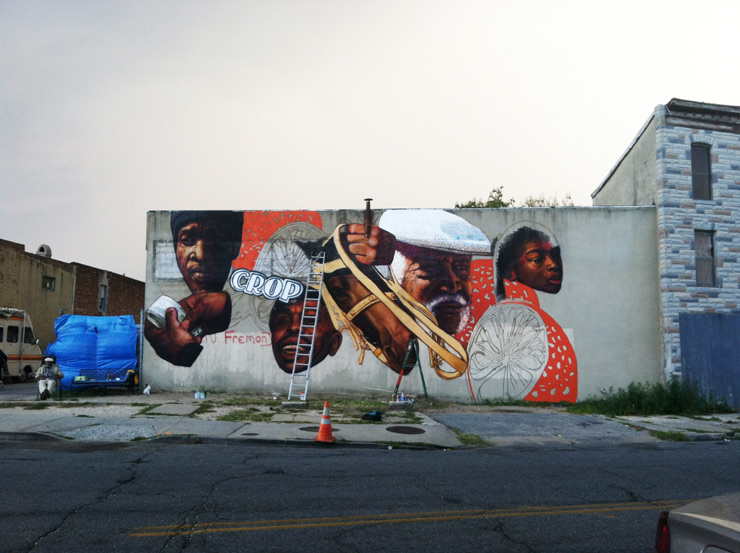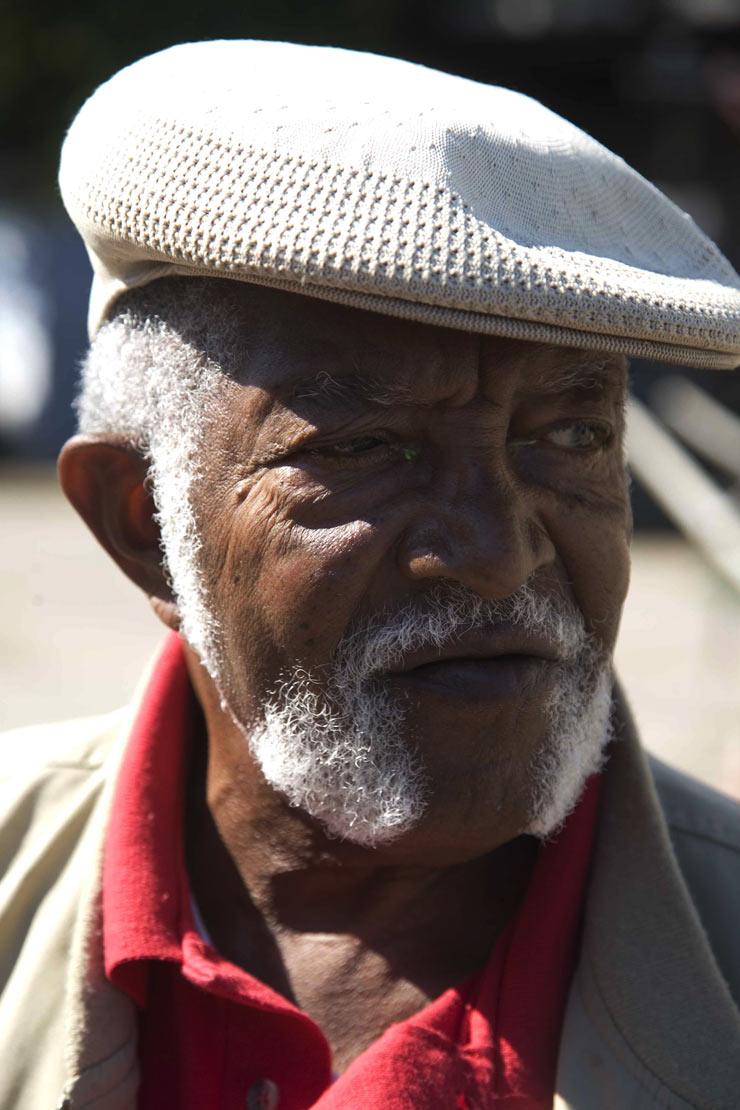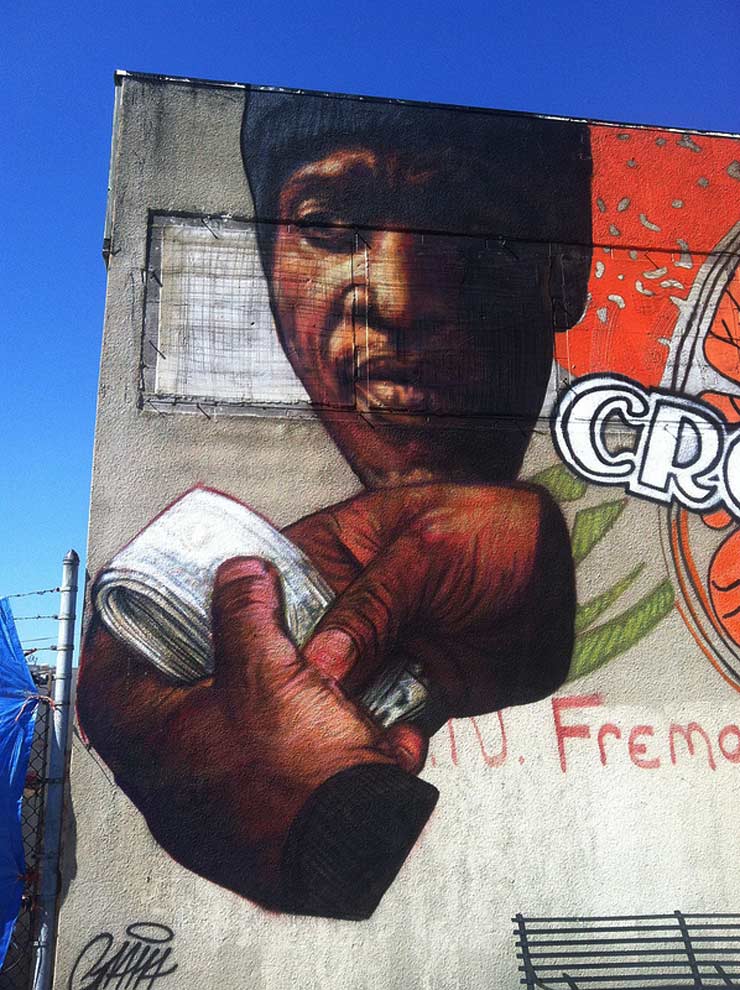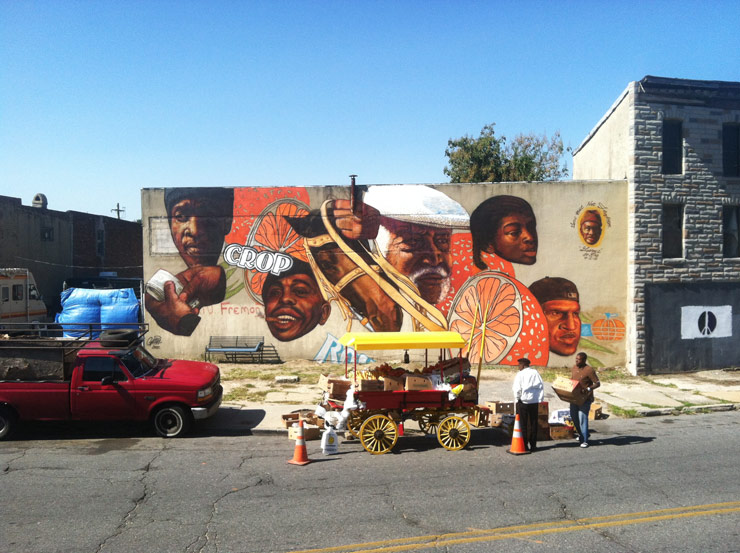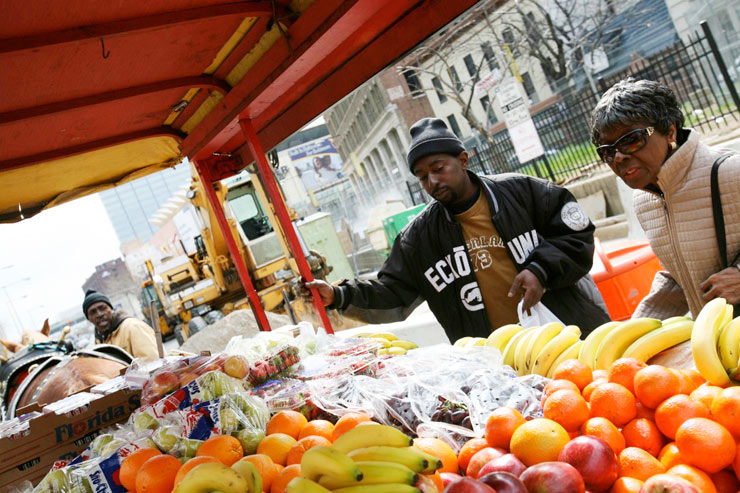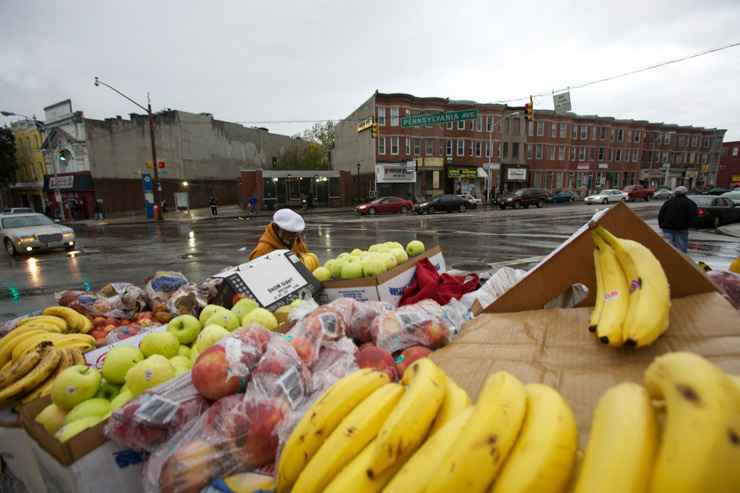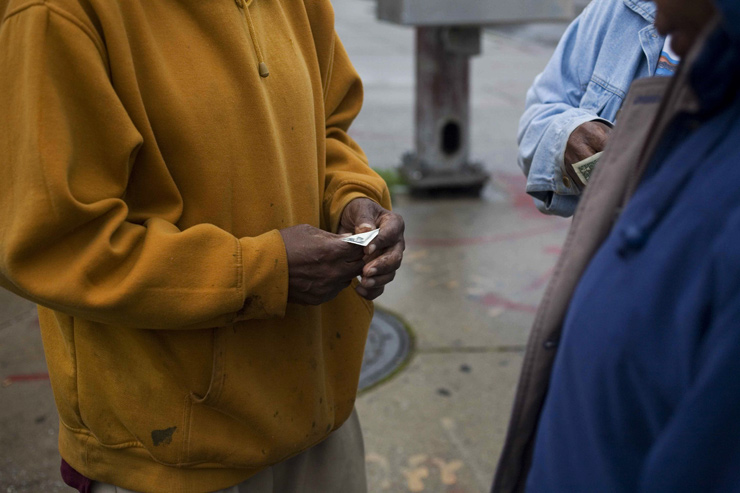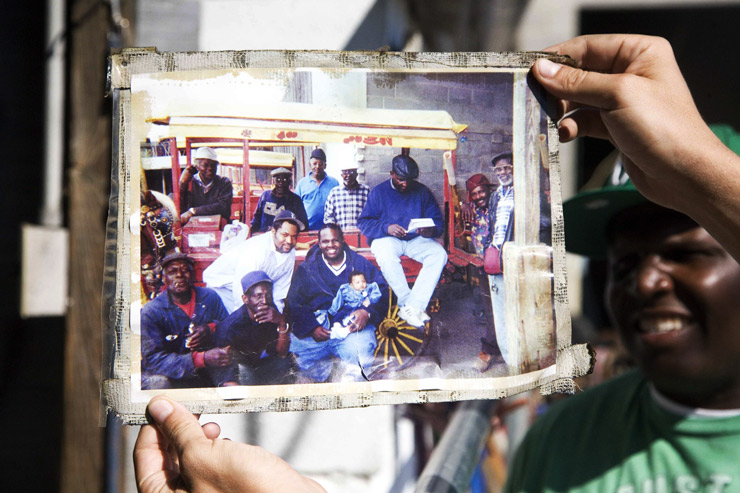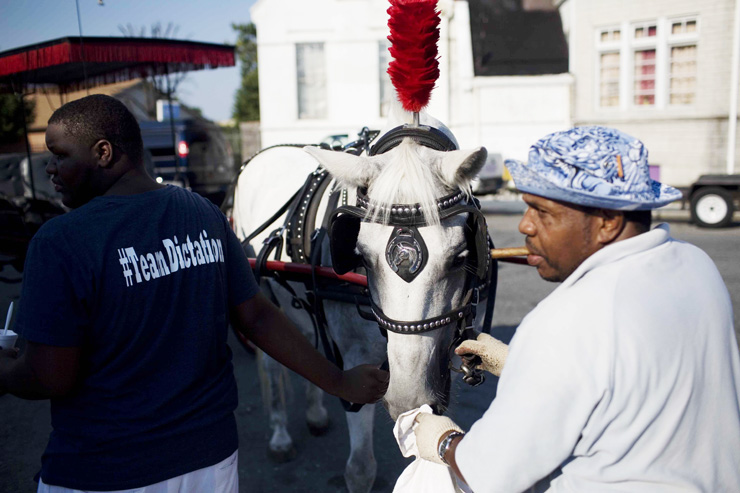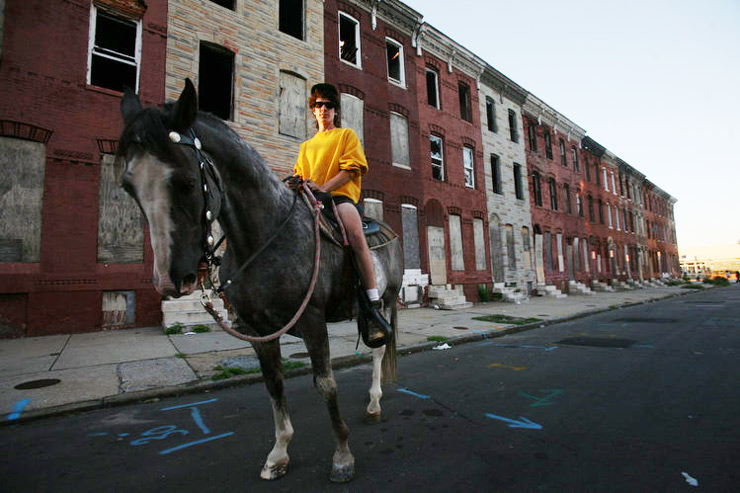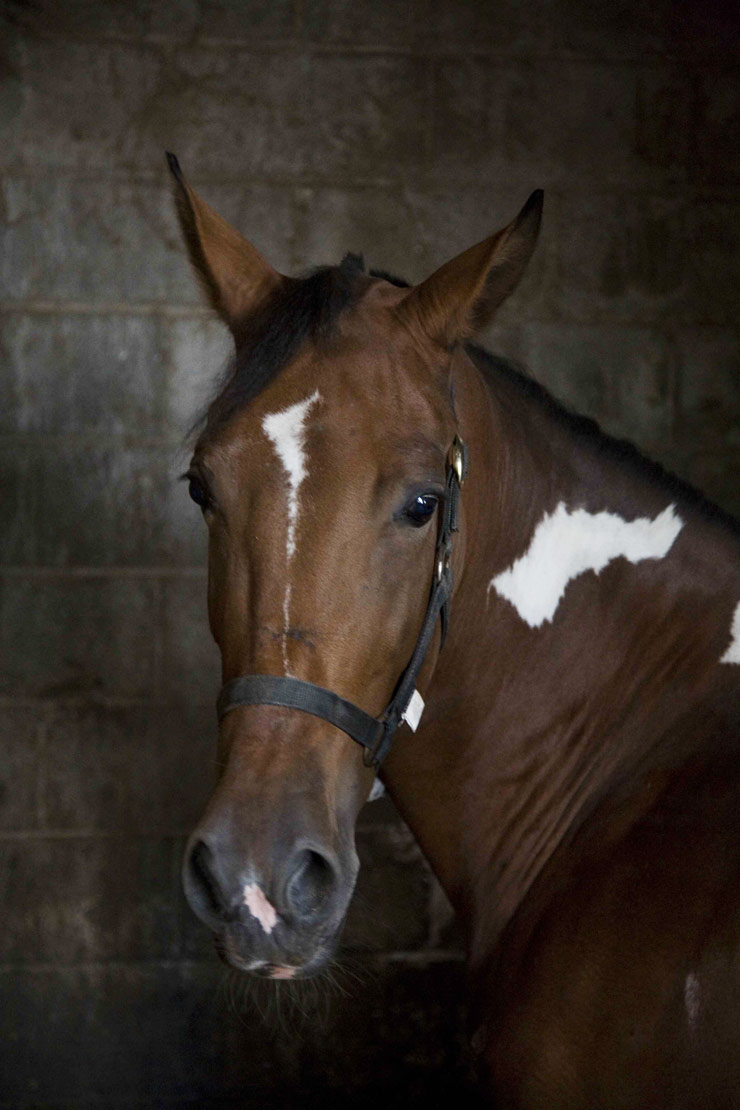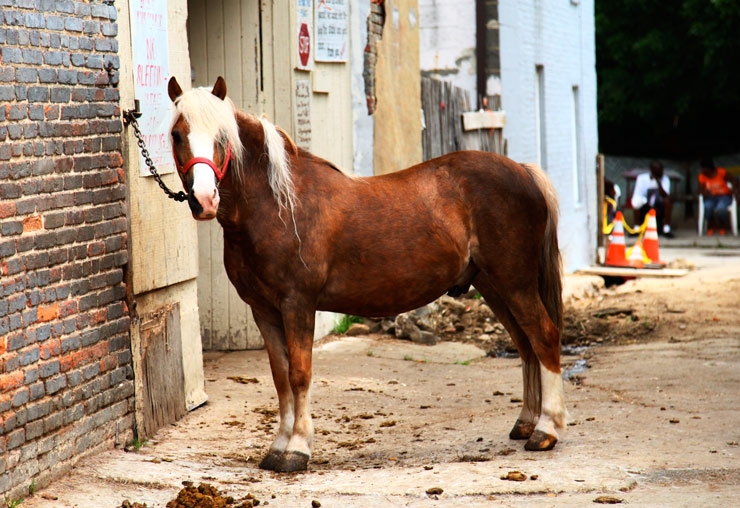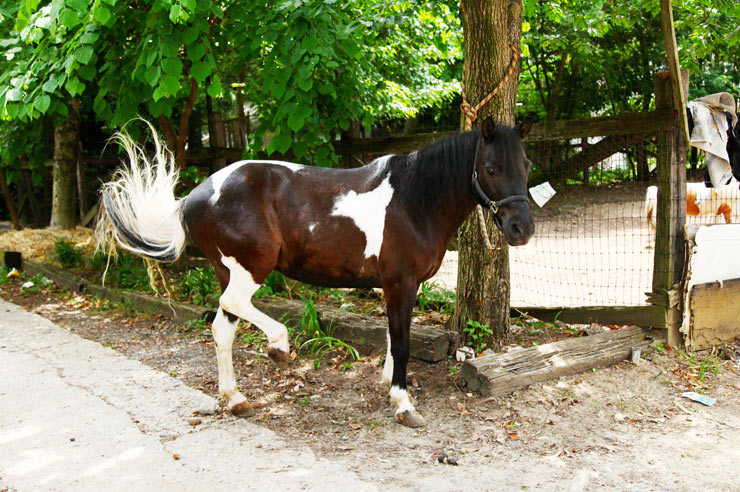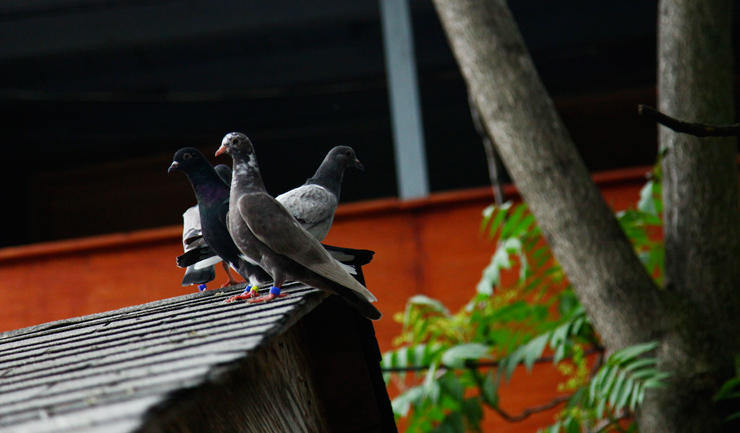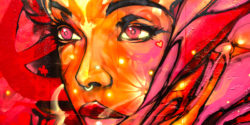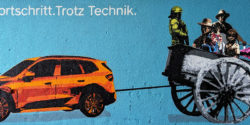Street Artist Gaia regularly highlights people from whichever community that he’s painting or wheatpasting in. Passersby commonly stop to talk while he’s working, often adding layers of history, knowledge, opinion, and nuance to his piece while he works. With his newest wall in Sandtown, a neighborhood of Baltimore, Gaia draws attention to a dying local profession that is hanging on, but barely.
Gaia “The Arabbers” Sandtown, Baltimore. 2012 (photo © Gaia)
Arabbers, pronounced locally with a long A (“A-rab”) were salespeople who had as many as 400 commercial carts offering fresh produce and other items rolling daily through the streets of Baltimore at one time, according to some accounts. Horse-drawn carts were a normal part of the early 20th century street life and amazingly B-Town still supports a few of these small business people on the streets in the 21st.
Because of new zoning and bylaws enacted during a period of urban renewal, the city restricted where horse stables existed, and many were put out of business. But during our travels through Baltimore with photographer Martha Cooper, who grew up there, we have had occasion to meet a number of the people who still carry this trade forward, some for many generations. Their small fenced off plots of land and stables appear suddenly like an oasis of farm life from another era in the middle of otherwise urban blocks. Once able to provide a good living to a family, Arabbers still brings fresh food to under served communities at reasonable prices. Unfortunately the proud profession is now endangered by the economic pressures of rising fees, the costs of animal care, and stable upkeep.
One of the people featured in the new mural by Gaia, Great Grandpa Manboy. Sandtown, Baltimore. 2012. (photo © Gaia)
“The Arabbers are a dying Baltimore tradition,” says Gaia, “that have long been a staple of this remarkable city.” The NYC Street Artist, who has been living in Baltimore for a handful of years while attending university as an art student, feels a kinship to the families who are still enduring to keep this kind of livelihood sustainable. “These men and women define the word ‘hustle’,” he remarks, “trotting along both desolate and vibrant landscapes selling their goods and making ends meet. This mural depicts four generations; starting with the great grandfather Manboy in the middle and up to Fruit’s son on the top right.”
Gaia “The Arabbers” Sandtown, Baltimore. 2012 (photo © Gaia)
As the many expressions of Street Art freely bleed into all of art’s disciplines, many of Gaia’s more recent work clearly overlaps the traditions of community murals, where local residents are called out and celebrated, deified, congratulated, and mourned. In this case, the tradition also extends to being a little bit educational as Gaia points to some of the contributing factors that endanger a profession here, “ The Arabber portraits are mixed with the logos on the containers in which their produce comes: a global economy meets a fading, tough tradition.”
Gaia “The Arabbers” Sandtown, Baltimore. 2012 (photo © Gaia)
Gaia “The Arabbers” Sandtown, Baltimore. 2012 (photo © Gaia)
Gaia “The Arabbers” Sandtown, Baltimore. 2012 (photo © Gaia)
Gaia “The Arabbers” Sandtown, Baltimore. 2012 (photo © Gaia)
Gaia “The Arabbers” Sandtown, Baltimore. 2012 (photo © Gaia)
Gaia “The Arabbers” Sandtown, Baltimore. 2012 (photo © Gaia)
Gaia “The Arabbers” Sandtown, Baltimore. 2012 (photo © Gaia)
Gaia “The Arabbers” Sandtown, Baltimore. 2012 (photo © Gaia)
Gaia “The Arabbers” Sandtown, Baltimore. 2012 (photo © Gaia)
Gaia “The Arabbers” Sandtown, Baltimore. 2012 (photo © Gaia)
A Pony in a Baltimore stable. 2011 (photo © Jaime Rojo)
A Pony in a Baltimore stable. 2011 (photo © Jaime Rojo)
Pigeons and Ponies mix well at a Baltimore Stable. 2011 (photo © Jaime Rojo)
 BROOKLYN STREET ART LOVES YOU MORE EVERY DAY
BROOKLYN STREET ART LOVES YOU MORE EVERY DAY